We all know the typical German Shepherd colors.
But many people occasionally come across gorgeous colors on social media and maybe even in real life.
The color is often not mentioned or plainly mislabeled.
Because in reality, the real German Shepherd colors are shrouded in mystery.
Major pet websites are spreading false information. Additionally, graphics are floating around that feature false GSD colors alongside real ones.
Colors are often not just about preference but marketing terms for “rare” colors which can reveal an irresponsible breeder.
These so-called breeders offer colors mentioned as faulty by the AKC, or even worse, colors that indicate a crossbreed or underlying health conditions.
The AKC mentions the following in the breed standard:
Color: The German Shepherd Dog varies in color, and most colors are permissible. Strong rich colors are preferred. Pale, washed-out colors and blues or livers are serious faults. A white dog must be disqualified.
AKC Breed Standard – GSD
The AKC breed standard doesn’t mean that other colors are necessarily “bad” but at the very least they’re disqualified from shows.
Furthermore, it’s definitely justified that some colors are among the unaccepted ones.
We’ll dive deeper into how you can avoid undesirable colors and become somewhat of an expert on the GSD’s real colors and patterns.
True German Shepherd Colors
There are 7 acceptable German Shepherd colors:
- Black and Tan
- Black and Red
- Solid Black
- Sable (dark, black, red variants)
- Black and Cream
- Black and Silver
- Bi-Color
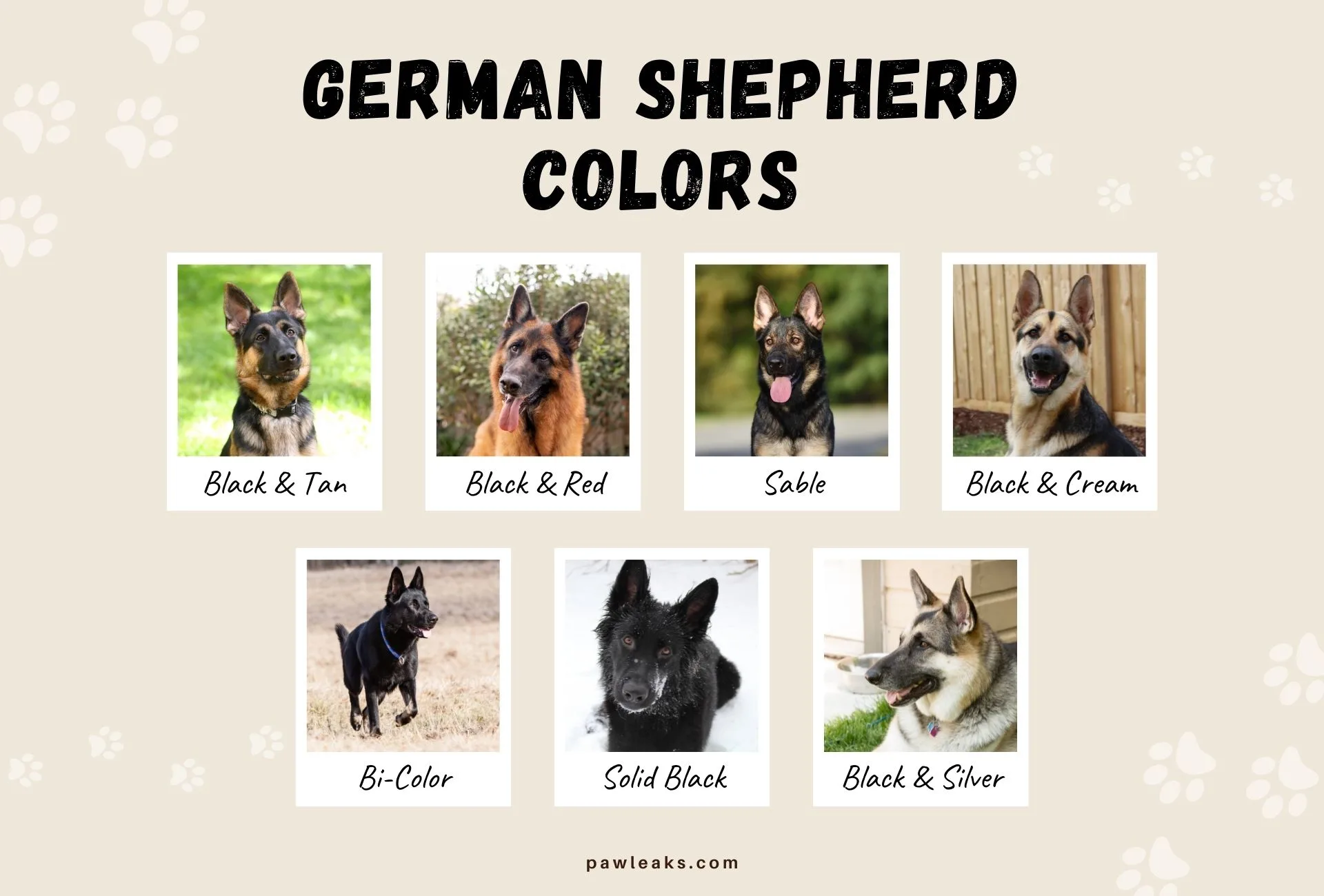
Black and Tan
Black and Tan is the most common color among German Shepherds.
The classic black and tan German Shepherd is often seen in working lines.
While this dog definitely exists in show lines across the world too, many people in the US prefer the next type that’s more red than tan.
The tan part is also commonly referred to as mahogany or rust in other breeds and everything essentially refers to the same color.
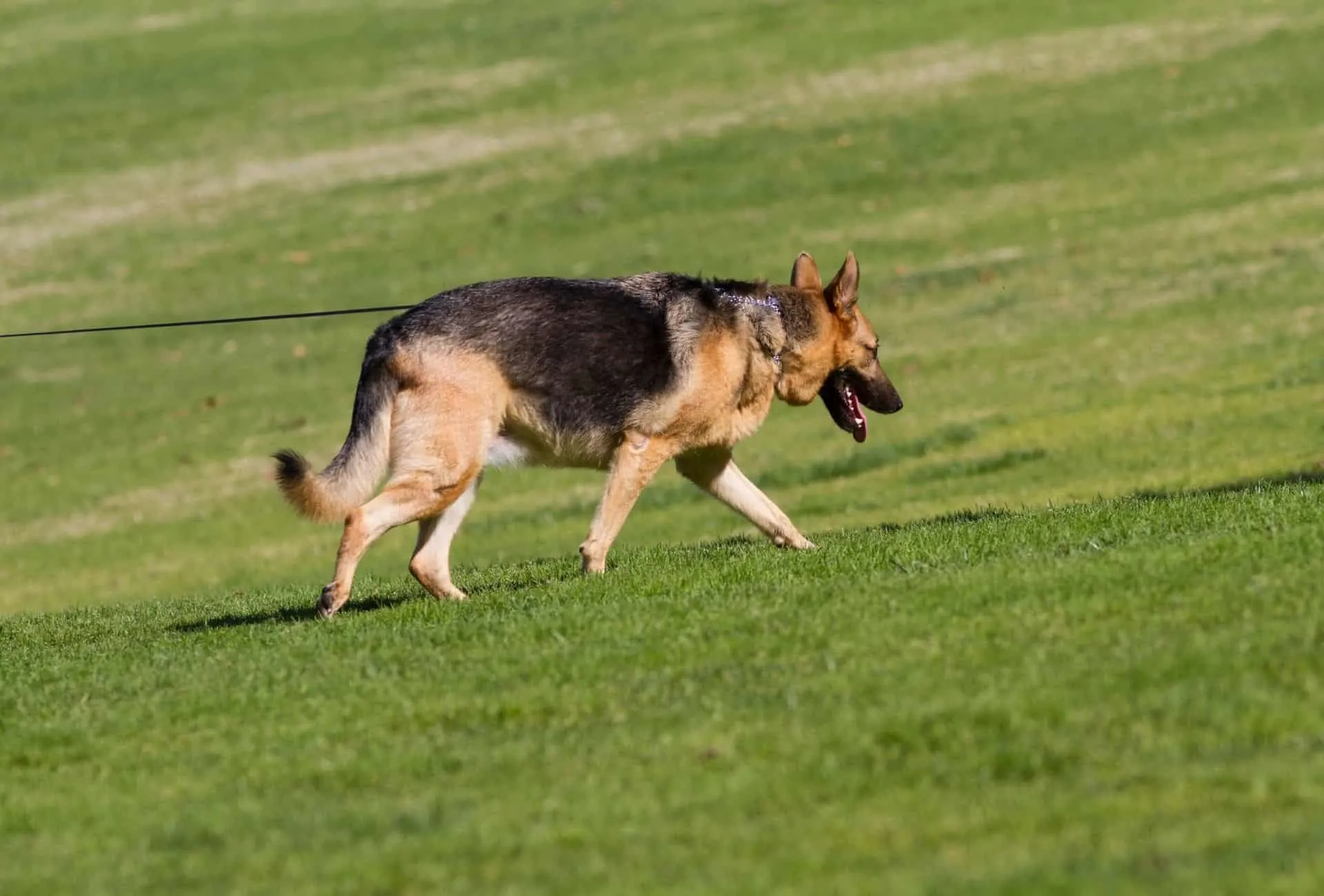
How rich or pale this coat type is can vary but it’s a pretty safe choice when it comes to color.
People who want to compete in conformation may need to look more closely at the coat.
Black and Red
As mentioned, black and red German Shepherds are favorites among the show lines.

A rich, red coat can surely look stunning on a German Shepherd.
Solid Black
The purely black German Shepherd is quite rare and sought-after.
However, be aware of breeders trying to sell you a dog just based on coat color.
While black is a common color among other breeds, the black gene has been found to be recessive in the German Shepherd.
Black German Shepherds are created through a solid black parent with another solid black parent or a black and tan part.
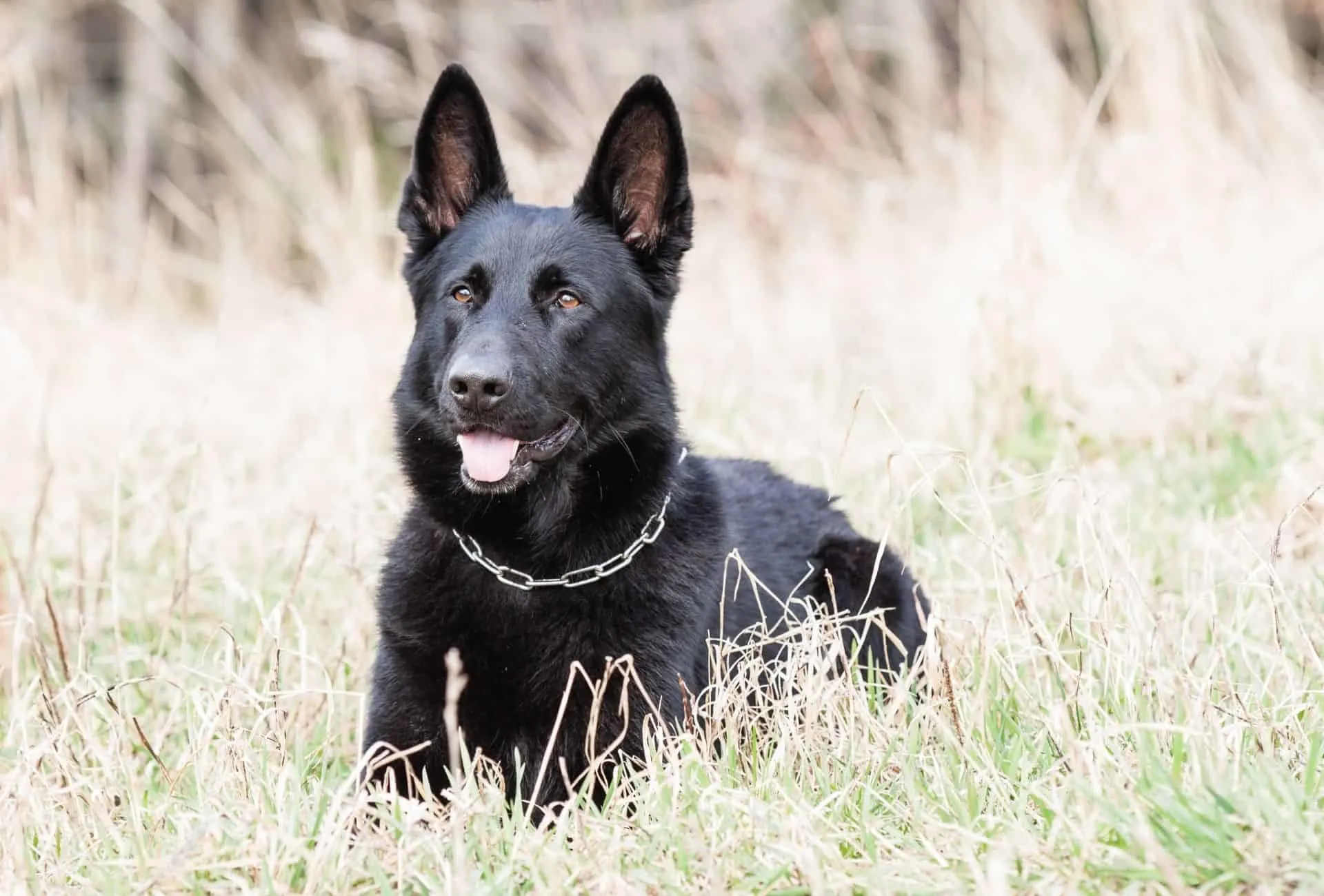
Unless connected to crossbreeding or poor health, color has absolutely nothing to do with behavior and your black GSD may look more menacing but can be a real softie (depending on the genetics and breeding line).
Temperament selection, training, and socialization are what determine how your dog’s going to behave.
Sable
The term sable describes a color pattern where dark is most commonly combined with greyish or reddish colors.
Tan and red sable German Shepherds are also possible. In this case, the black is mixed with mainly tan or red.
In any case, the tip of the guard hair is black most of the time.

Sable German Shepherd puppies can change color slightly as they grow.
Dark sable, black sable, and light sable all describe the same color type.
Black and Cream
Since black and cream is not really defined as a GSD color, it’s a bit tricky to pin down.
Most of the time, black and cream German Shepherds have a saddle pattern with a very pale tan, so basically, they’re black and light tan GSDs.
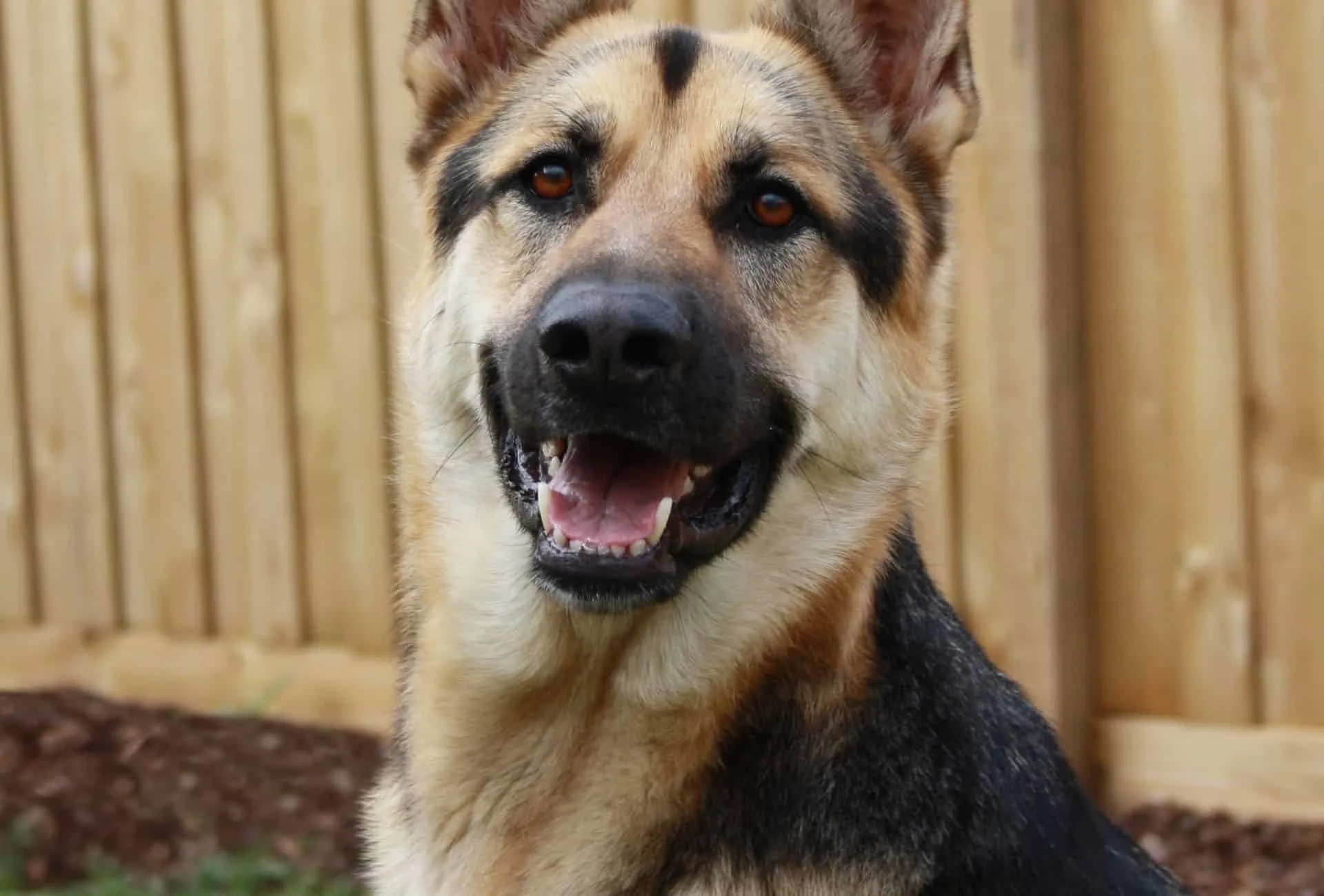
According to the AKC standard, this could be described as “pale”, so it’s probably not desirable according to the breed standard.
Black and Silver
This is also not a widely spread color pattern because black and silver German Shepherds are basically a variant of sable or black and very light tan.
Some people with silver dogs (the same applies to people with clearly sable dogs sometimes) refer to their dogs as black and gray dogs.
Don’t mix the black and silver type up with the solid gray GSD (I’ll cover that below).
Bi-Color
The Bi-color German Shepherd is just a black and tan/red German Shepherd, except that the black covers the whole body except the paws and sometimes around the eyebrows.
This means that the bi-color GSD is somewhere between the classic types with tan or red mixed with black and the solid black type.
Bi-color GSDs are not found that often and are often labeled as one of the terms above due to the confusion around how many tan parts are actually allowed.
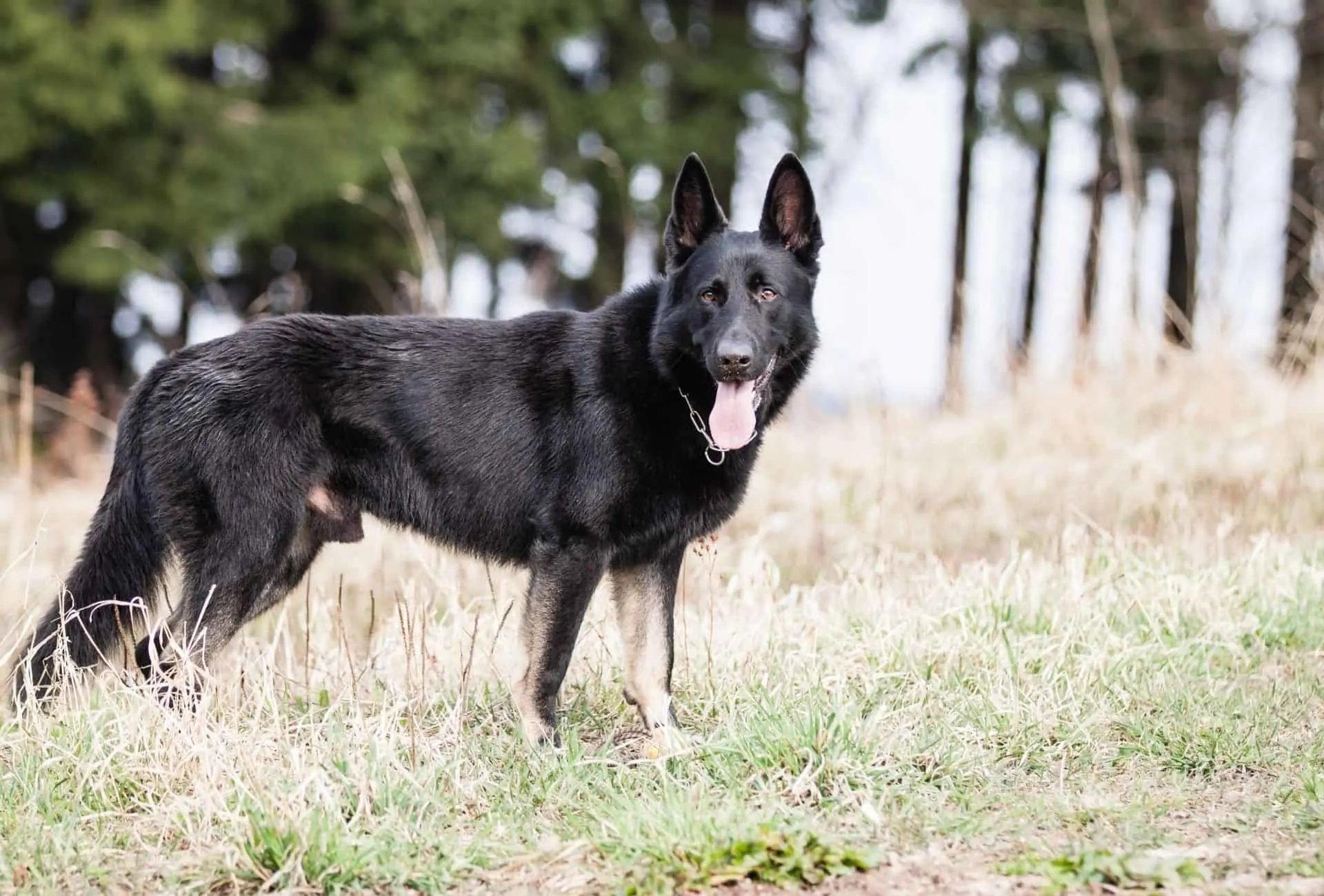
Some owners think that small tan parts don’t disqualify a dog to be solid black – but a solid black is defined as pure black, no other color on the whole body.
Recommended Reading: German Shepherd Straight Back Vs. Sloped Back
Faulty German Shepherd Colors
The so-called faulty color types are often marketed as rare which implies desirability.
While the existence of any of these colors on GSDs doesn’t disqualify them from being purebred, they sometimes really aren’t.
It doesn’t help that major pet websites put pictures of false breeds besides some of these colors.
Others of the mentioned colors are possible indicators of health issues.
These colors are not accepted by major breeding clubs and can be considered as a fault:
- Pure White
- Solid Gray
- Blue
- Liver
- Solid red
- Fawn / Yellowish White / Isabella
- Spotted Black and White
- Panda
- Golden
- Merle
Pure White
A lot of people are arguing that the purely white German Shepherd is a crossbreed while others are labeling them as Albinos and some are even saying white GSDs can be healthy purebreds.
When they have long coats, totally white German Shepherds can look like their Swiss counterpart – the White Swiss Shepherd Dog.
Apart from whether or not purely white GSDs exist as crossbreeds and possibly as purebreds, Albinism is definitely a possibility.
That being said, a major pet website calls Albinism a flaw and highlights that they’re often shy or skittish (which usually isn’t related to coat color directly but rather to poor breeding or hereditary health issues) while still saying these dogs make good family dogs.
Don’t get me wrong, all rescued dogs can possibly fit great for your lifestyle, you just have to find the right one.
That being said, don’t get involved with buying from a breeder whose puppies possibly have health issues just because you’re relying on this statement.
Solid Gray
Unlike sable or the black and silver GSD, the solid gray German Shepherd does not exist in the show or even the working line world.
The solid gray is also not a washed-out blue or creamy type, it’s literally solid gray Shepherds you’ll see in some cases.
In the show ring, solid gray is considered to be a serious fault.
Again, a major pet website labels this color as “popular” which it definitely isn’t and shouldn’t be.
Many people make the mistake to refer to their sable or silver GSD as gray though, so be aware of that.
Blue
Light blue, dark blue, steel blue, sable blue – none of these colors are usually seen competing and they’re not a common color among German Shepherds.
Even though one major pet website proclaims that the light blue GSD is “rare” and the other variants of darker shades aren’t, that’s just not true and suggests that light blue is somehow superior.
Liver
Liver-colored dogs are often seen with a pink nose.
This brownish coat color is moving somewhere along the lines of the tan, red, and cream shades.
However, liver is pretty distinct and resembles the “chocolate Lab” more than any of the aforementioned colors.
Solid red
As the word suggests, this coat type is not black and red but a fully red German Shepherd instead.
Some people might mean the black and red type but don’t be fooled if a breeder offers you a completely red GSD.
I have never seen a solid red German Shepherd and don’t expect that to change in the near future.
There’s no genetic basis for this color type to develop.
Fawn / Yellowish White / Isabella
All these terms are essentially labeling what is a black and cream German Shepherd.
Isabella types can be very light and might just be a ploy to disguise a white or even albinistic dog.
These colors are extremely unusual among German Shepherds and not commonly seen and not desirable either in most cases.
Spotted Black and White
Another major pet website that features what seems to be a different breed under this color type.
There is no spotted black and white German Shepherd in the sense that this color type implies.
Australian Kelpies do have this beautiful coat color though.
Panda
Just a cute marketing term for something I’m not really sure what it’s supposed to be.
If you’re checking pictures, it shows you everything.
Black and white GSDs, some mixed with brown, as well as sable patterns with the resemblance to a Panda.
I’d suggest staying away from Panda German Shepherd puppies.
Golden
Oh, you’re thinking Golden Retriever?
It’s a popular enough color since millions of new dog owners adopt a Goldie every year, so why not extend this to the German Shepherd.
However, a purely Golden GSD is most likely a crossbreed and unless a DNA test convinces me of the opposite, I’ll hold firmly to that opinion.
Merle
The merle gene does not exist among German Shepherd lines in a natural form.
The genetic consequences of breeding two merle dogs can be catastrophic and breeding of these shouldn’t be encouraged.
German Shepherd Coat Types
All these colors come in various coat types. You’ll see either one of three coat lengths:
- Short-haired German Shepherd
- Medium length coat
- Long hair
The medium-length coat is most commonly seen. Depending on your climate, you might opt for the shorter or longer version.
A double coat is typical and consists of a dense outer coat and a softer undercoat.
While the breed is generally easy to maintain, weekly brushing is required.
Shedding season can be a disaster for some dog owners, especially those with long-haired German Shepherds.
A proper diet, exercise, etc. will make sure your dog’s healthy which is often expressed through the skin.
Here’s more on how you can increase your German Shepherd’s lifespan and overall health.
Let me know what color your German Shepherd has or what you think is the most beautiful color on GSDs in the comments.
Disclaimer: This blog post does not substitute veterinary attention and does not intend to do so. I am not a veterinarian or pet nutritionist. If your dog shows any sign of illness, call your vet.
Mike Murphy
Tuesday 21st of March 2023
We love our 7 month old sisters in pure black AKC german shepherds and someday hopefully will find a pure black male pup.
Stan
Monday 21st of August 2023
I had a pure bred "Silver tab" Shepard. All black with a tiny white diamond on his neck. Name was Trooper. At 6 weeks you couldn't see him above the grass at night. At 9 weeks he was 24" tall when sitting on his hinds, ears fully perked. Full grown he was 145lbs of solid muscle! He was over 6ft when he would put his front paws on my shoulders. He stopped breaking the chain from the dog house he had (he was only there while I worked). He, instead just ripped the entire front of the dog house off!! Good memories. He was the most amazing dog ever!!!
Mari
Saturday 11th of February 2023
Great article. Wouldn't the white shepherd be the "White Swiss Shepherd Dog"? We have a male short coat and a female long coat. Besides the color, the appearence is exactly the same as a german shepherd. Behavior wise, tha male short coat is a perfect guard dog. The female long coat is very friendly and intelligent, but stuborn.
Hannah
Saturday 3rd of December 2022
The founder of akc said no good dog is a bad color. There are probably more healthy *unusual * colored german shepherds vs traditional. Color doesn't make a dog good or bad!!! I own a panda german shepherd and she's the healthiest smartest dog I've ever owned. Yes she is health tested and so is my blue male and his parents.
Danielle
Saturday 3rd of December 2022
Hi Hannah, as the article stated - there are no "bad" colors, but many are disqualified from participating in AKC shows. It's great if your dog is health tested thoroughly but sadly, not all dogs with unusual colors are bred for health & temperament.